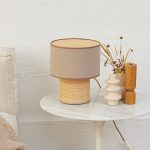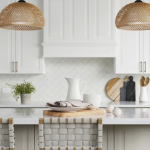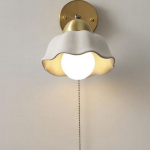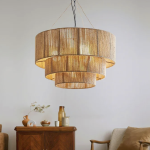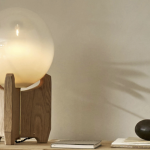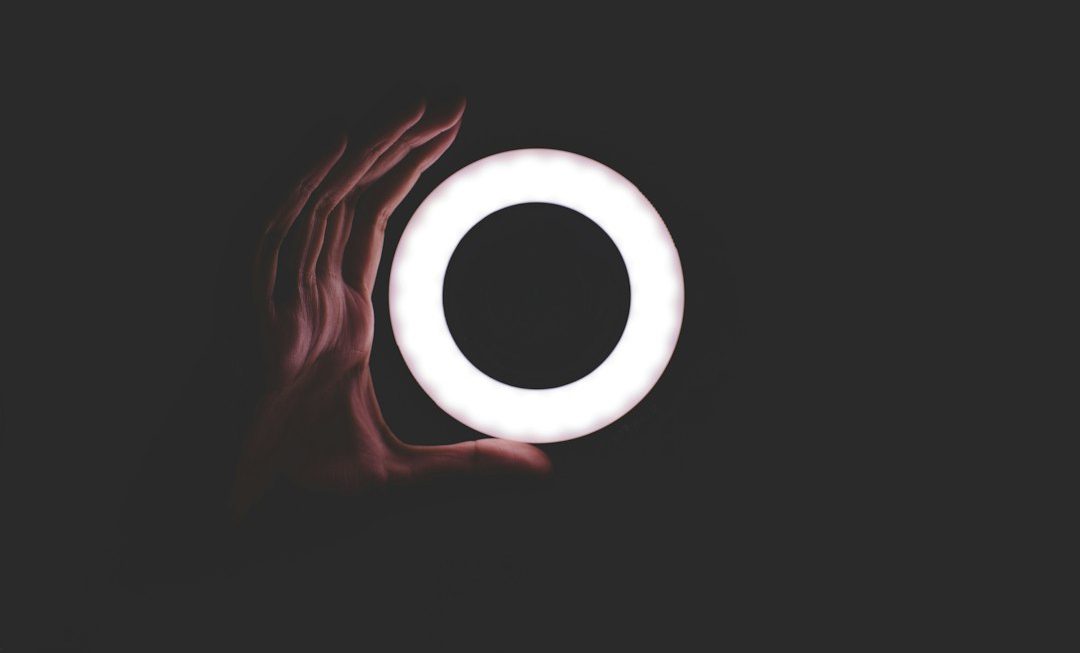Floor lamps are an essential element in interior design, as they not only provide illumination but also add style and personality to a space. These versatile lighting fixtures come in a variety of designs, sizes, and styles, making it easy to find the perfect one to complement any decor. Whether you need task lighting for reading or studying, ambient lighting for creating a cozy atmosphere, or accent lighting to highlight a specific area or object, floor lamps can fulfill all these needs.
Functionality is a key aspect of floor lamps. They are designed to be portable and easily moved around, allowing you to change the lighting arrangement in your space whenever you desire. Floor lamps can be positioned next to a sofa or armchair to provide task lighting for reading or working, placed in a corner to add ambient lighting to a room, or used as a decorative element to enhance the overall design scheme. With their adjustable height and direction of light, floor lamps offer flexibility and versatility that other lighting fixtures may not provide.
Types of Floor Lamps
There are several types of floor lamps available on the market, each with its own unique features and benefits. The most common types include torchiere lamps, arc lamps, pharmacy lamps, and tripod lamps.
Torchiere lamps are tall and slender with an upward-facing shade that directs light towards the ceiling. They are ideal for providing ambient lighting and can help create a warm and inviting atmosphere in a room. Arc lamps have a long arm that extends outward from the base, allowing the light to be positioned over a specific area. These lamps are perfect for providing task lighting for activities such as reading or working at a desk.
Pharmacy lamps have an adjustable arm and shade that can be directed towards a specific area. They are often used as task lighting in offices or living rooms. Tripod lamps have three legs that provide stability and support for the lamp. They come in various styles and can add a touch of elegance and sophistication to any space.
When choosing a floor lamp, it is important to consider the purpose and function it will serve in your space. Think about the type of lighting you need, the size and style of the lamp, and how it will fit into your overall design scheme. Additionally, consider the materials used in the construction of the lamp, as well as the quality of the light it emits.
Understanding Lighting
Proper illumination is crucial in any space, as it not only affects the functionality of the room but also has a significant impact on the overall ambiance and mood. There are three main types of lighting: ambient, task, and accent.
Ambient lighting provides overall illumination to a room and is often referred to as general lighting. It should be evenly distributed throughout the space to ensure that there are no dark or shadowy areas. This type of lighting can be achieved through ceiling fixtures, wall sconces, or floor lamps.
Task lighting is focused and directed towards a specific area where activities such as reading, writing, or working take place. It should be bright enough to prevent eye strain but not too harsh or glaring. Task lighting can be provided by desk lamps, table lamps, or floor lamps with adjustable arms or shades.
Accent lighting is used to highlight specific objects or areas in a room, such as artwork, architectural features, or decorative elements. It adds depth and dimension to a space and creates visual interest. Accent lighting can be achieved through spotlights, track lighting, or floor lamps with adjustable heads.
Understanding the different types of lighting and their effects is essential when choosing a floor lamp for your space. Consider the purpose and function of the lamp and how it will contribute to the overall lighting scheme in your room.
Preparing Your Space
Before purchasing a floor lamp, there are several factors you should consider to ensure that it will meet your needs and fit seamlessly into your space. First, determine the purpose of the lamp and the type of lighting you require. Do you need task lighting for reading or working, ambient lighting to create a cozy atmosphere, or accent lighting to highlight a specific area or object?
Next, measure your space to determine the appropriate size and height of the lamp. Consider the scale and proportion of the room and choose a lamp that will complement the existing furniture and decor. A floor lamp that is too large or too small can throw off the balance of a space and make it feel awkward or crowded.
When choosing a floor lamp, also consider the style and design of your room. Look for a lamp that will enhance the overall aesthetic and complement the existing decor. Consider the materials used in the construction of the lamp and how they will coordinate with other elements in your space.
Finally, think about the practical aspects of owning a floor lamp. Consider how easy it will be to clean and maintain, as well as how easy it will be to replace bulbs or other parts if necessary. Choose a lamp that is durable and built to last, so you can enjoy it for years to come.
Placement
Finding the perfect spot for your floor lamp is crucial in creating a well-lit and balanced space. Consider the purpose and function of the lamp and how it will contribute to the overall lighting scheme in your room. If you need task lighting, place the lamp next to a sofa or armchair where you will be reading or working. If you need ambient lighting, position the lamp in a corner or near a seating area to create a warm and inviting atmosphere.
When placing a floor lamp, consider the height and direction of light. Adjust the height of the lamp so that it is at eye level when you are seated or standing in the room. This will ensure that the light is directed towards your task or activity without causing glare or shadows.
To create a balanced lighting scheme, consider the other light sources in your space. If you have overhead lighting or other lamps, position the floor lamp in a way that complements and enhances the existing lighting. Avoid placing the lamp too close to other light sources, as this can create harsh or conflicting lighting effects.
Assembly

Once you have chosen the perfect floor lamp for your space, it is time to assemble it. Most floor lamps come with detailed instructions and all the necessary hardware for assembly. Follow the instructions carefully and make sure to tighten all screws and connections securely.
When assembling a floor lamp, it is important to avoid common mistakes that can affect its stability and functionality. Make sure that all parts are aligned correctly and that the lamp is level and balanced. Check that the electrical components are properly connected and that the cord is not twisted or tangled.
If you are unsure about assembling a floor lamp yourself, it is always best to seek professional assistance. Many lighting stores offer assembly services or can recommend a qualified electrician who can help with installation.
Maintenance
To keep your floor lamp looking its best and functioning properly, regular maintenance is essential. Dust the lamp regularly with a soft cloth or feather duster to remove any dirt or debris. Avoid using harsh chemicals or abrasive cleaners, as these can damage the finish or materials of the lamp.
If your floor lamp has a fabric shade, vacuum it gently with a brush attachment to remove any dust or dirt. If the shade is stained or soiled, spot clean it with a mild detergent and water solution. Allow the shade to dry completely before reattaching it to the lamp.
To replace bulbs in your floor lamp, first, make sure that the lamp is unplugged and turned off. Remove the shade if necessary and unscrew the old bulb from its socket. Replace it with a new bulb of the same wattage and type, making sure to handle it with a clean cloth or tissue to avoid touching the glass.
If any other parts of your floor lamp become damaged or worn, such as the cord or switch, it is best to consult a professional electrician for repair or replacement. Do not attempt to fix electrical issues yourself, as this can be dangerous and may void any warranties on the lamp.
Energy Efficiency
In today’s environmentally conscious world, energy efficiency is an important consideration when choosing any lighting fixture, including floor lamps. Energy-efficient floor lamps use less electricity and produce less heat than traditional incandescent bulbs, making them more environmentally friendly and cost-effective.
LED (light-emitting diode) bulbs are the most energy-efficient option for floor lamps. They use up to 80% less energy than traditional incandescent bulbs and can last up to 25 times longer. LED bulbs also produce less heat, reducing the risk of fire or burns.
When choosing an energy-efficient floor lamp, look for the ENERGY STAR label. This certification ensures that the lamp meets strict energy efficiency guidelines set by the U.S. Environmental Protection Agency (EPA). ENERGY STAR certified lamps use at least 75% less energy than traditional incandescent bulbs and can save you money on your energy bills.
Decorating with Floor Lamps
Floor lamps are not only functional but also decorative elements that can enhance the ambiance of a space. They come in a variety of styles, sizes, and designs, making it easy to find one that complements your existing decor.
When incorporating floor lamps into your design scheme, consider the overall aesthetic and style of your space. Choose a lamp that will enhance and complement the existing furniture and decor. For a modern or contemporary space, opt for a sleek and minimalist design with clean lines and metallic finishes. For a traditional or vintage-inspired room, choose a lamp with ornate details and warm finishes.
Consider the materials used in the construction of the lamp and how they will coordinate with other elements in your space. A floor lamp with a wooden base and fabric shade can add warmth and texture to a room, while a lamp with a metal base and glass shade can create a sleek and sophisticated look.
When placing floor lamps in your space, consider the height and scale of the lamp. A tall and slender lamp can add height and drama to a room, while a shorter and wider lamp can create a more intimate and cozy atmosphere. Experiment with different placements and angles to find the perfect spot for your floor lamp.
In conclusion, floor lamps are an essential element in interior design, providing both functionality and style to a space. They come in a variety of types, styles, and designs, making it easy to find the perfect one for your needs. Understanding the different types of lighting and their effects is crucial when choosing a floor lamp, as it will determine the overall ambiance and mood of your space.
Before purchasing a floor lamp, consider the purpose and function it will serve in your room. Measure your space to determine the appropriate size and height of the lamp, and consider the style and design that will complement your existing decor. Once you have chosen the perfect floor lamp, follow the assembly instructions carefully to ensure its stability and functionality.
Regular maintenance is important to keep your floor lamp looking its best and functioning properly. Dust the lamp regularly, clean the shade if necessary, and replace bulbs as needed. Consider energy-efficient options when choosing a floor lamp to reduce your environmental impact and save on energy costs.
Finally, incorporate floor lamps into your design scheme to enhance the overall ambiance of your space. Choose a lamp that complements your existing decor and experiment with different placements to find the perfect spot. With their versatility and style, floor lamps can transform any room into a well-lit and inviting space.

